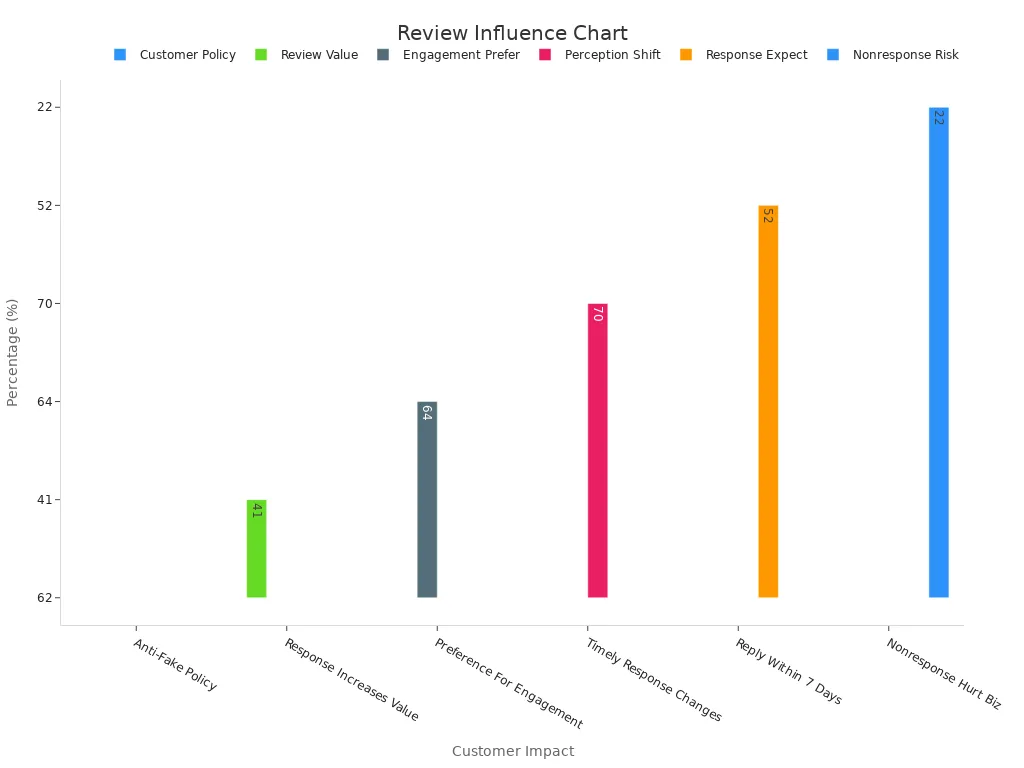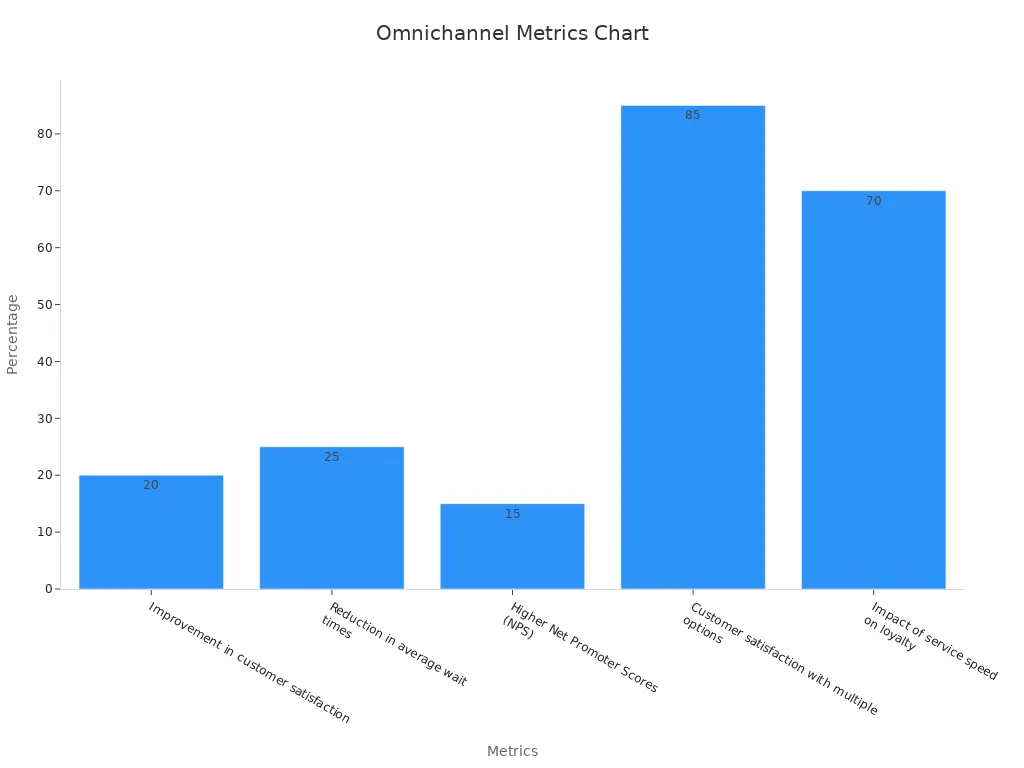Turn After Sales Support Complaints into Smiles

Dealing with after sales support issues can feel like navigating a maze, right? You expect smooth customer service, but sometimes it falls short of customer expectations. Instead of letting frustration take over, think of it as a chance to improve your customer experience strategy. When you approach complaints with the right customer service strategies, you can turn dissatisfaction into customer loyalty. For example, companies like Sobot help businesses elevate their customer journey by offering solutions that meet modern customer engagement needs. With tools like omnichannel platforms, they simplify customer experience management, ensuring satisfaction at every touchpoint.
Stay Calm and Gather Information

Why Staying Calm Matters in After Sales Support
When you’re dealing with customer complaints, staying calm is your superpower. It helps you think clearly and avoid escalating the situation. Customers often mirror your tone, so a calm approach can set the stage for a productive conversation. Plus, keeping your cool allows you to focus on finding solutions rather than dwelling on negative experiences. For example, if you’re frustrated with bad customer service, a calm demeanor can help you articulate your concerns effectively, ensuring your feedback gets the attention it deserves.
Collecting Relevant Details About Poor Customer Service
Gathering the right information is key to resolving complaints. Start by noting down what went wrong—whether it’s missed deadlines, incorrect billing, or poor communication. Be specific. For instance, if inconsistent communication left you confused, jot down the dates and times of those interactions. Good-quality data is essential for addressing customer complaints effectively. Poor data quality, like inaccurate contact information, can lead to frustration and missed opportunities for resolution.
Here’s a quick checklist to guide you:
- Record the names of agents you spoke with.
- Note the time and date of each interaction.
- Save any emails, chat transcripts, or receipts.
This detailed approach ensures you have everything you need to present your case clearly.
Organizing Documentation for Effective Complaint Resolution
Once you’ve collected the details, organize them for easy reference. Create a folder—digital or physical—where you store all related documents. Include screenshots, receipts, and customer feedback. A well-organized file not only speeds up the resolution process but also shows the company you’re serious about addressing the issue.
For example, Samsung streamlined its customer journey by integrating Sobot’s omnichannel solution. This unified workspace allowed agents to access customer histories effortlessly, reducing repetitive questioning and improving customer experience management. You can take a similar approach by keeping your documentation in one place, ensuring you’re prepared for any follow-up conversations.
Contact Customer Support
How to Communicate Clearly and Concisely
When reaching out to customer support, clarity is your best friend. Start by explaining your issue in simple terms. Avoid jargon or overly technical language that might confuse the agent. Instead, focus on the key points—what happened, when it happened, and what resolution you’re seeking. For example, if your product arrived damaged, describe the condition, include the order number, and specify whether you want a replacement or refund.
Here’s a quick tip: structure your message like a story. Begin with the background, move to the problem, and end with your desired outcome. This approach keeps your communication organized and easy to follow. Research shows that personalized and empathetic communication improves customer service experience and builds stronger connections. Companies that proactively invite feedback and maintain consistent tone across interactions see higher customer retention rates.
Tips for Being Polite Yet Assertive
Politeness opens doors, but assertiveness ensures they stay open. When contacting customer support, balance both. Use polite language like “I understand mistakes happen” or “I appreciate your help.” At the same time, be firm about your expectations. For instance, say, “I’d like this issue resolved by [specific date]” instead of “Whenever you can get to it.”
Studies show that polite yet assertive communication leads to better outcomes. In healthcare, variations in pitch and intensity improved teamwork and engagement, which are vital for resolving high-pressure situations. Similarly, in customer service, this approach fosters collaboration and ensures your concerns are taken seriously. Remember, politeness earns goodwill, while assertiveness ensures action.
Providing Evidence to Support Your Complaint
Evidence is the backbone of any successful complaint resolution. When contacting customer support, provide all relevant documentation to back up your claim. This includes receipts, photos, chat transcripts, or emails. For example, if you’re disputing a billing error, attach a copy of the invoice and highlight the discrepancy.
Companies with strong omni-channel engagement strategies report a 25% improvement in close rates and a 10% increase in average order value. These results stem from efficient communication and well-documented interactions. Sobot’s omnichannel solution helps businesses unify customer data, ensuring agents have all the information they need to resolve issues quickly. By presenting clear evidence, you make it easier for the support team to address your concerns and meet your customer expectations.
Escalate the Issue
Sometimes, your initial attempts to resolve a problem with after sales support might not go as planned. When that happens, it’s time to take things up a notch. Escalating the issue can help you get the attention and resolution you deserve. Here’s how to do it effectively.
When to Ask for a Supervisor in After Sales Support
If you feel like you’re hitting a wall with the first level of customer support, don’t hesitate to ask for a supervisor. This step is crucial when your concerns are being ignored, or the agent lacks the authority to resolve your issue. For example, if you’ve been promised a refund multiple times but haven’t received it, a supervisor can step in to expedite the process.
Timing is everything. If the agent seems unsure or keeps repeating scripted responses, politely request to speak with someone higher up. Say something like, “I appreciate your help, but I’d like to escalate this to a supervisor for further assistance.” This approach shows you’re serious about resolving the issue while maintaining a respectful tone.
Using Official Escalation Channels for Poor Customer Service
Most companies have official escalation channels designed to handle customer complaints that can’t be resolved at the initial level. These channels often include dedicated email addresses, online forms, or even specialized teams. Check the company’s website or customer service policy to find these options.
For instance, some businesses provide escalation forms where you can detail your complaint and attach supporting documents. This is where your organized documentation comes in handy. Companies like Samsung have streamlined their customer journey by integrating tools like Sobot’s omnichannel solution, which ensures that escalated issues are handled efficiently. By using these official channels, you increase your chances of getting a timely and satisfactory resolution.
Writing Formal Complaints to Higher Authorities
When all else fails, a formal complaint can be your last resort. Writing a well-structured letter or email to higher authorities within the company can make a significant impact. Start by addressing the letter to the appropriate department or individual, such as the head of customer service. Clearly outline the issue, the steps you’ve already taken, and the resolution you’re seeking.
Here’s a simple structure to follow:
- Introduction: Briefly explain who you are and the nature of your complaint.
- Details: Provide a timeline of events, including dates, interactions, and any promises made.
- Supporting Evidence: Attach relevant documents like receipts, emails, or chat transcripts.
- Resolution: State what you expect, whether it’s a refund, replacement, or apology.
For example, if you’ve experienced bad customer service that led to negative experiences, highlight how it failed to meet customer expectations. Be polite but firm. A well-written complaint not only increases the likelihood of resolution but also helps the company improve its customer experience strategy.
Pro Tip: Keep a copy of your complaint for future reference. If the issue remains unresolved, you can use it when contacting external resources like consumer protection agencies.
Leverage External Resources
Sometimes, resolving your complaint directly with the company doesn’t work out. That’s when external resources can help you get the attention and resolution you deserve. Let’s explore how you can use reviews, consumer protection agencies, and social media to your advantage.
Leaving Reviews to Highlight Poor Customer Service
Leaving a review is one of the most effective ways to share your experience and hold companies accountable. Platforms like Google Reviews, Yelp, or Trustpilot allow you to describe what went wrong and how it impacted your customer journey. Authentic feedback not only helps other customers but also pushes businesses to improve their customer service.
Here’s why reviews matter:
| Statistic | Description |
|---|---|
| 62% | Customers reject fake reviews, showing the importance of genuine feedback. |
| 41% | Customers feel valued when businesses respond to their reviews. |
| 7 in 10 | Customers change their perception of a brand after receiving a response. |
When you leave a review, focus on being honest and constructive. Mention specific details, like dates or interactions, to make your feedback more impactful. Companies that respond promptly to reviews often see improved customer loyalty. For example, 64% of customers prefer brands that engage with them over those that appear flawless.
Contacting Consumer Protection Agencies for Assistance
If your complaint remains unresolved, consumer protection agencies can step in. These organizations specialize in helping customers like you get fair treatment. They handle thousands of complaints every year and recover millions of dollars for consumers.
| Metric | Value |
|---|---|
| Total Complaints Handled | 280,413 |
| Total Amount Recovered/Saved | $262,973,073 |
Filing a complaint with these agencies is straightforward. Most have online forms where you can submit your case along with supporting documents. This step not only increases your chances of resolution but also holds companies accountable for meeting customer expectations.
Using Social Media to Gain Attention and Resolution
Social media platforms like Twitter, Facebook, and Instagram are powerful tools for addressing poor customer service. Companies monitor these channels closely because public complaints can impact their reputation. A well-crafted post can grab their attention and lead to faster resolutions.
Did you know that 70% of consumers expect a response on social media within 24 hours? Speed matters here. If you’re posting about an issue, include relevant hashtags and tag the company directly. For example, “@CompanyName, I’ve been waiting for a refund for two weeks. Can you help?” This approach increases visibility and encourages a quick response.

Timely responses can turn upset customers into loyal advocates. In fact, 45% of people post positively about a brand after their complaint is resolved effectively. So, don’t hesitate to use social media as a tool to improve your customer experience strategy.
Learn and Prevent Future Issues
Researching Companies’ After-Sales Policies Before Purchase
Before making a purchase, take a moment to research the company’s after-sales policies. This step can save you from future headaches. Look for details like return policies, warranty coverage, and customer service availability. For example, some companies offer 24/7 support, while others might limit assistance to weekdays. Knowing these details upfront helps you set realistic customer expectations.
A quick tip: check if the company uses advanced tools like Sobot’s omnichannel solution. Businesses that invest in such platforms often provide smoother customer journeys. These tools unify communication channels, making it easier for agents to resolve issues quickly. By choosing companies with robust after-sales policies, you’re already improving your customer experience strategy before the purchase even happens.
Reading Customer Reviews to Avoid Poor Customer Service
Customer reviews are like a crystal ball for predicting your experience. They reveal how well a company handles complaints and whether its customer service meets expectations. When reading reviews, focus on patterns rather than isolated incidents. If multiple customers mention slow responses or unresolved issues, it’s a red flag.
Here’s a fun fact: 80% of consumers switch to competitors after just one bad experience. That’s why reviews matter. They help you avoid companies that might fall short on service. Platforms like Trustpilot or Google Reviews are great places to start. Look for feedback on how the company handles refunds, replacements, or technical support. This insight ensures you make informed decisions and avoid unnecessary frustration.
Building a Checklist for Future Purchases
Creating a checklist is a smart way to prevent after-sales issues. It keeps you organized and ensures you don’t overlook important details. Here’s a simple checklist to guide you:
- Verify the company’s return and warranty policies.
- Check customer reviews for service quality.
- Confirm the availability of customer support channels.
Regular use of a checklist can improve your overall experience. It helps identify strengths and weaknesses in customer service processes and ensures all steps are functioning properly. For businesses, tools like Sobot’s solutions can streamline these processes, enhancing team efficiency and productivity.
| Evidence Type | Description |
|---|---|
| Consumer Behavior | 80% of consumers switch to competitors after one bad experience. |
| Checklist Purpose | Designed to avoid poor service incidents and improve satisfaction. |
By following this checklist, you’re not just buying a product—you’re investing in a hassle-free customer journey.
How Sobot Enhances After Sales Support


Leveraging Sobot’s Voice/Call Center for Better Customer Experience
Sobot’s Voice/Call Center transforms how you handle after-sales support. Imagine having a system that routes calls intelligently, ensuring customers connect with the right agent every time. With features like AI-powered voicebots and real-time call monitoring, you can resolve issues faster and improve customer satisfaction. For example, the platform’s smart call routing reduces wait times, which directly impacts customer expectations and loyalty.
The system’s 99.99% uptime ensures your support remains uninterrupted, even during peak hours. Plus, its global number availability means you can assist customers no matter where they are. By integrating with your existing CRM, Sobot’s Voice/Call Center provides agents with a unified workspace. This allows them to access customer histories instantly, making interactions smoother and more personalized.
Here’s a quick look at how Sobot’s Voice/Call Center improves outcomes:
| Metric | Value |
|---|---|
| Correct answers | Over 80% |
| Customer satisfaction | Over 95% |
| Problem resolution rate | 85% |
| Customer happiness | 99% |
Using Sobot’s Omnichannel Solution to Streamline Support
Sobot’s Omnichannel Solution takes your customer service to the next level. It unifies all communication channels—email, chat, social media, and voice—into one platform. This means your agents no longer have to juggle multiple systems. Instead, they can focus on delivering a seamless customer journey.
The solution also leverages AI to automate repetitive tasks, freeing up your team to handle more complex issues. For instance, AI-driven chatbots can resolve 22.2% of self-service questions, allowing agents to concentrate on high-priority cases. Compared to traditional methods, Sobot’s Omnichannel Solution significantly boosts performance:
| Metric | Omnichannel Solutions | Traditional Methods |
|---|---|---|
| Improvement in customer satisfaction | 20% | N/A |
| Reduction in average wait times | 25% | N/A |
| Higher Net Promoter Scores (NPS) | 15% | N/A |

Real-Life Success: How Samsung Improved Customer Satisfaction with Sobot
Samsung’s collaboration with Sobot showcases the power of an all-in-one solution. After implementing Sobot’s platform, Samsung achieved a 97% customer satisfaction score. The integration unified their communication channels, enabling agents to access customer information quickly. This eliminated repetitive questioning and improved the overall customer experience strategy.
Sobot’s platform also connected seamlessly with Samsung’s ordering system. This allowed agents to provide context-aware responses, meeting customer expectations more effectively. The results? A 30% increase in agent efficiency and happier customers. Samsung’s success story proves that investing in the right tools can transform your after-sales support.
Tip: Want to replicate Samsung’s success? Start by exploring how Sobot’s solutions can align with your business needs.
Turning after-sales complaints into resolutions starts with staying calm and gathering details. Communicate clearly, escalate when needed, and use external resources wisely. Learn from the experience to refine your customer journey. With Sobot’s solutions, like omnichannel platforms, you can exceed customer expectations and boost satisfaction. Remember, persistence transforms challenges into opportunities.
| Metric | Description |
|---|---|
| Overall resolution rate | Measures the percentage of tickets resolved compared to total tickets received. |
| First contact resolution rate | Indicates the percentage of issues resolved on the first contact with the customer. |
| Average ticket handling time | Reflects the average time spent by agents on each ticket, indicating efficiency. |
| Time to resolution | The average time taken to resolve customer inquiries, impacting customer experience. |
Tip: Stay proactive. Every resolved complaint strengthens your customer experience strategy and builds loyalty.
FAQ
How can I ensure my complaint gets resolved quickly?
Provide clear details, stay polite yet firm, and use official escalation channels. Organized documentation speeds up the process and shows you're serious about resolution.
What should I do if customer service ignores my complaint?
Escalate the issue by asking for a supervisor or using external resources like consumer protection agencies. Social media can also help grab the company’s attention.
How does Sobot improve the customer journey?
Sobot unifies communication channels, automates repetitive tasks, and provides agents with customer data. This ensures faster resolutions and exceeds customer expectations.
See Also
10 Strategies to Enhance Customer Satisfaction via Live Chat
Transforming Customer Support with AI Service Agents
Excelling in Live Chat for Effective Customer Support
